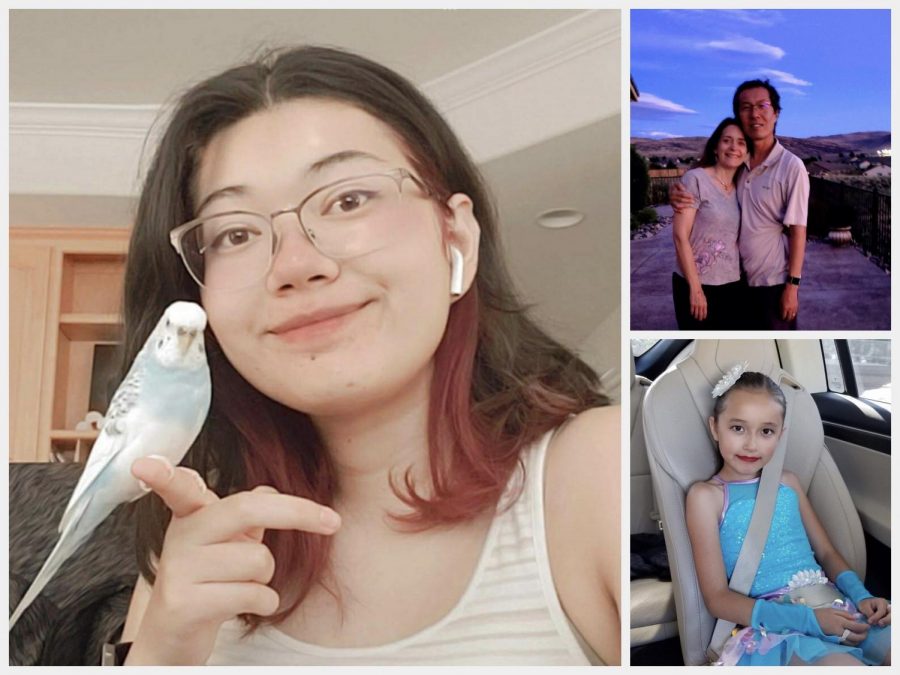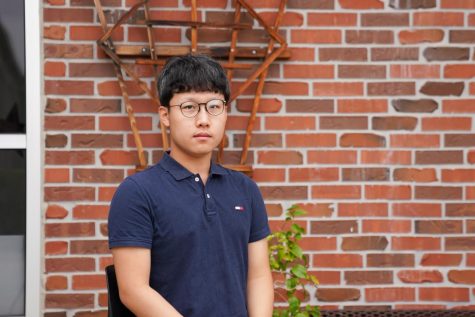Biracial families share their family dynamics
Looking into the experience of living in a biracial family
December 10, 2021
Senior Taralynn Kang’s life is defined by a myriad of color — with a [European] mother, who is a mix of Swedish, German and Polish, and Korean father, she’s been exposed to a medley of dishes, holidays and cultures all her life. Kang is one of many biracial families at MVHS, and one of a number which is increasing due to the nation’s increasing racial diversity.
Both Taralynn and her mother Audra Kang believe that one positive aspect of being from a biracial family is the benefits that come from diversity. Audra shared through an email that she had the opportunity to “[be exposed] to the belief system and customs of another culture,” while living with her husband.
“[An interesting experience was] going to Seoul with my husband’s entire family to celebrate my father-in-law’s 70th birthday,” Audra said. “We had a very formal party where we all wore traditional silk Korean clothing. We bowed before my in-laws as we performed a ceremony of respect for them. I felt like I was in another world, but I understood its importance and was glad to be a part of the occasion.”
Taralynn states that these cultural customs have influenced her family members greatly. She explains that their lives are “a blend of a little bit of everything” and the multiple cultures in her household shape how she and her family interact with one another.
Taralynn’s sister, 6th grade Kaela Kang shares that one Korean tradition her family enjoys are “family dinners with Korean dumpling soup for New Years’ celebration” and a “variety of Korean dishes for Chuseok” as a way of bonding. Taralynn believes that “being exposed to different types of people, cultures, foods” is one of the perks of being from a biracial family, and feels grateful to experience that medley of cultures.
Because of the differences in her and her husband’s cultures, Audra remembers that when she first got married, she had to go through the process of “comparing and contrasting various nuances of how to behave in different situations.” She shares that through those processes, she was able to further connect with her husband and sometimes step out of her cultural comfort zone in order to respect her husband’s culture.
“We simply had different ways of expressing and acknowledging,” Audra said. “We learned to lean in toward each other by being more accepting of our differing customs and we stopped getting offended about every little thing because we knew that we cared about each other.”
Taralynn mentions that she also faced with challenges growing up, one of them being the struggle of trying to fit in among her friends and family. She explains that she sometimes felt that she “didn’t truly belong” as “being a part of so many [cultures] posed less personal connections to [one] specific culture,” while people around her had an “easier time connecting with other friends because they all have similar background[s].”
Furthermore, Taralynn explains that growing up, she also struggled to define her identity amid her diverse background. Through the experience, however, she explains that she was able to learn valuable lessons.
“There was a slight racial identity crisis at the beginning of my life,” Taralynn said. “Personally, I connected more to my Korean side because I had more exposure to that culture than any of the cultures from my mom’s side. I knew I was half-Korean and half-white, but I felt more Korean than white. Over time, I managed to shift my outlook on my identity, and I [realized] that just because I am [part of] more than one culture doesn’t mean I am of any less [importance] than others.”
Despite the differing customs, Audra explains that “there are a number of common goals” shared by both her and her husband including “taking care of family, treating other family members with respect and striving high in education and career goals.”
As her family members seek to come together despite differences, Audra shares that her husband has adopted many of her customs and beliefs, and she had “noticed that [she] had adopted some of [her husband’s] behavior as well.” Audra also explains that she is noticing a change in her family as a whole.
“I think as time goes on, the diversity within my family has greatly diminished and has evolved into a new level of comfort for all of us,” Audra said. “We strive less to prove our points about our earlier general beliefs and look for simple, but still meaningful, answers that are more inclusive and peaceful, and we make it a point to say ‘I love you,’ to each other.”




























